It's Easier Here.
Leith Cars Blog
Before you begin shopping for your new electric vehicle, it’s good to have a basic understanding of the different types of electric motors used in EVs. In our companion blog, “How EV Motors Work”, we give you a brief overview of the science and engineering behind today’s electric motors…”spoiler alert,” magnets and electromagnetic fields are at the heart of what propels every EV motor.
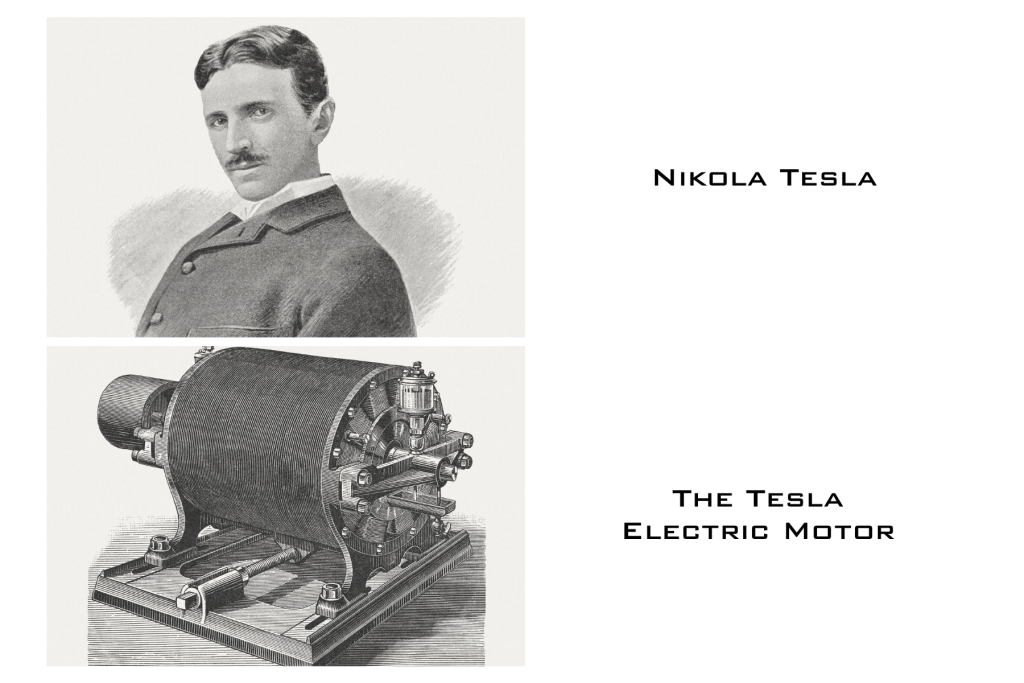
Over the decades of global dominance by the internal combustion engine (ICE), there has been a multitude of different types of engines used in vehicles because, frankly, none of the engines developed during the 130+ years of the automobile has proven to be the best, most efficient design.
In the case of electric mobility, however, there are really just three main types of EV motors used in most automotive applications and that’s what we’re going to cover for you now.
Heads-up! We’re about to get a little technical but we’re tossing in a measure of history too, for a good foundation.
Asynchronous Induction Motor
First up, is the asynchronous induction motor, which was actually invented in 1885 by Galileo Ferraris, one of the pioneers of the AC (alternating current) power system. Ferraris, working independently, didn’t patent his work on the motor, so credit is shared with Nikola Tesla, who patented his “Electro Magnetic Motor” design, three years later.
This type of EV motor is called asynchronous because the rotating magnetic field of the rotor and (static) stator are not synchronized. Electrical current and the rotating magnetic field produced by the stator are what move you when you mash the “go” pedal. On the flip side, when you need to slow down, the motor works like a generator, which allows the braking of the car to send energy back to the EV’s battery, known as (regenerative braking).
The (AIM) design is inexpensive to produce, it doesn’t require rare earth materials to create, it’s very reliable, and has good efficiency. It’s capable of on-demand performance too, which is why it is often used as the motor in all-wheel-drive cars like the Audi e-tron and Mercedes-Benz EQC. You’ll also find asynchronous motors in Volkswagen Group’s Modular Electric Matrix Platform (MEB) front-wheel-drive cars like the new ID.4.
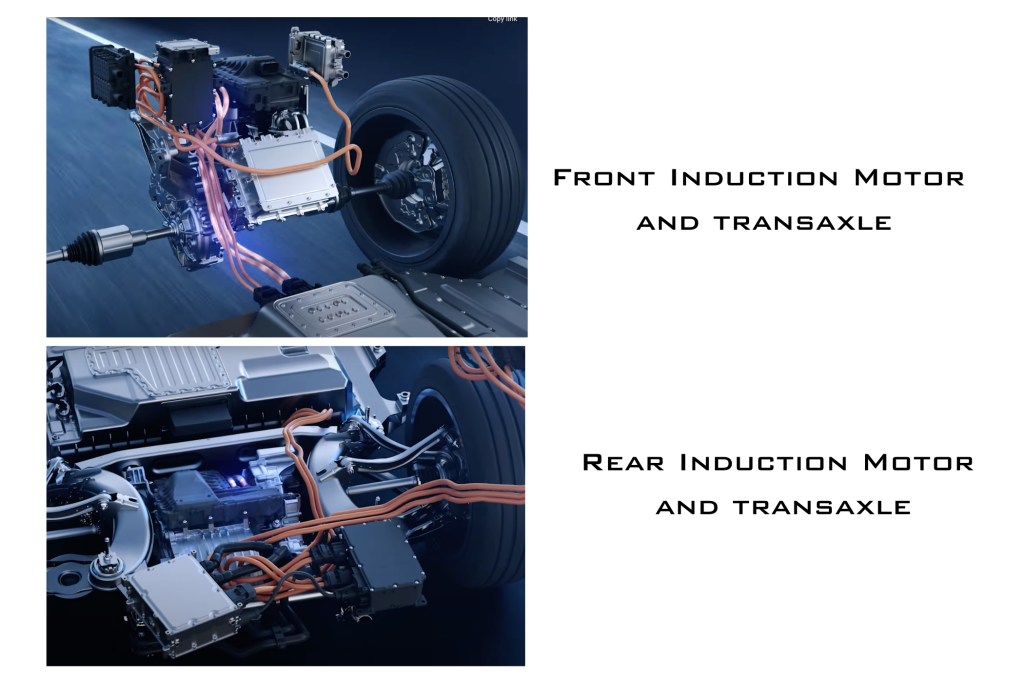
Synchronous Permanent Magnet Motor
The big difference between the asynchronous induction motor and a synchronous permanent magnet motor is the way the rotating magnetic fields in the rotor and the (static) “stator” are produced and how they interact. In (SPM) motors, a rotating magnetic field is created by permanent magnets in the rotor. The rotating magnetic fields of the rotor and stator are locked (or synchronized).
The permanent magnets in the rotor help increase the power and efficiency of this type of EV motor. The ability to create a good amount of power from a small package is why permanent magnet motors are used exclusively in Plug-in-hybrid-electric vehicles (PHEVs). The Jeep Wrangler 4xe (Four-by-e) is a great example of a PHEV that uses a small, synchronous permanent magnet motor.
On the plus side, the (SPM) motor is tops when it comes to efficiency, and for cars using just one electric motor, the synchronous permanent magnet design is what’s used. On the downside, this type of EV motor uses permanent magnets that are made from rare earth materials found mainly in China where they are mined from the earth. For this reason, most manufacturers try to reduce the usage of these rare earth materials in their EV motors.
Permanent magnet motors can be found in the Kia EV6 and VW Group (MEB) cars for use on the rear axles. You’ll also find the (SPM) in the Jaguar I-PACE, Audi e-tron GT, and Porsche Taycan.
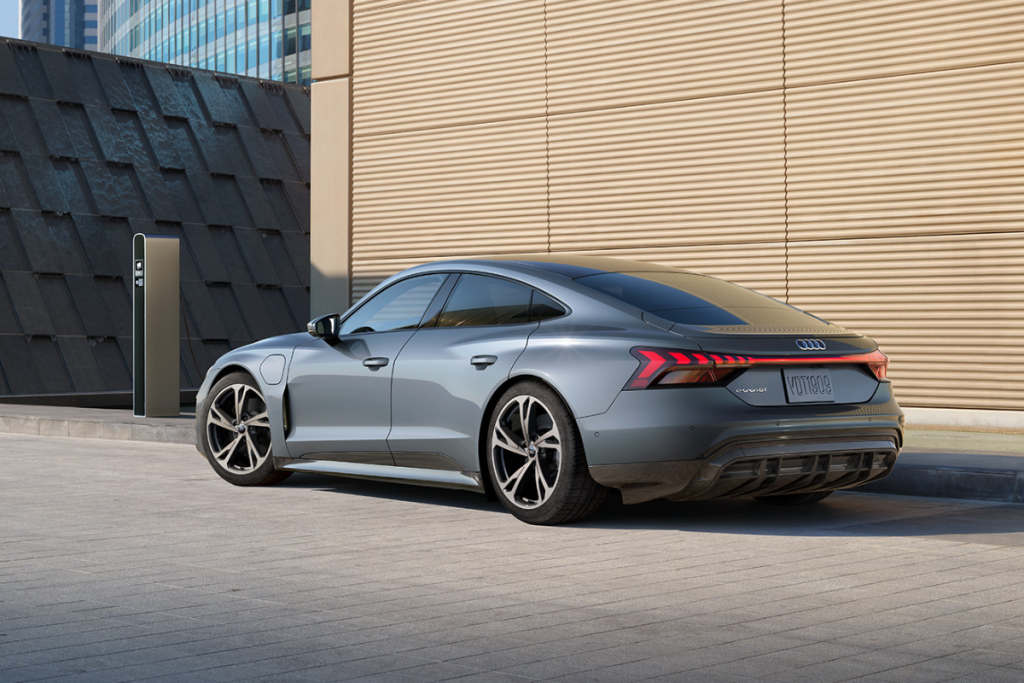
Electrically Excited Synchronous Motor
The final of our three main types of EV propulsion brings us to the electrically excited synchronous motor (ESM). Even though permanent magnet synchronous motors are the most efficient of the three, the rare earth materials needed to construct them can be an issue. So, manufacturers like BMW, use a hybrid design that features synchronous motors that do not require the mining of rare earth materials.
Instead of using permanent magnets in the rotor to create current, the (ESM) uses brushes and what’s called, slip rings. The (ESM) is less expensive to manufacture than a permanent magnet synchronous motor and has an efficiency rating of up to 93% according to BMW, which is close to the efficiency of a (SPM) motor.
However, because this type of EV motor uses brushes to help generate electric current, it will require the replacement of these components at some point in the life of the motor. The BMW iX, and i4 use electrically excited synchronous motors in the United States while the same motor is also found in the BMW iX3 that’s built and sold only in China.
By Mark Arsen, LeithCars.com
With new and improved electric vehicles entering the market, there are a few questions you might be asking yourself. Which brand and model is the best? Are the prices right for my budget? What does an EV even do for me? Let’s run through seven of Leith’s industry-recommended EVs under $50,000.
Ford Mustang Mach-E
$46,995
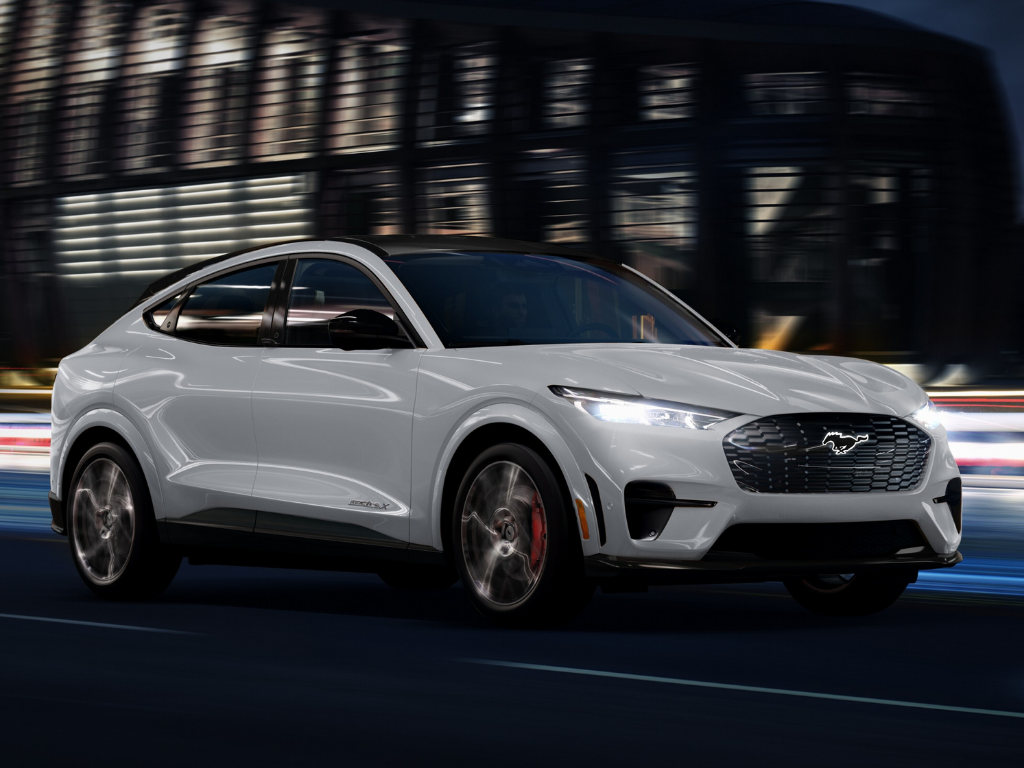
2023 Ford Mustang Mach-E Premium
The Ford Mustang Mach-E is our most expensive “under $50,000” EV, but that is for good reason. The RWD model has 346 horsepower and 317 pound-feet of torque, going from zero to 60 in just over six seconds. The range comes in at an estimated 250 miles. Customize your drive with three experiences: unbridle, engage, and whisper. The unbridled mode gives a sporty feel to the car with increased throttle response and enhanced driving sounds. Engage mode perfectly balances excitement and comfort, providing you with performance and in-vehicle sounds. Whisper mode provides a calm driving experience with gradual acceleration and a lighter deceleration response. A fun feature of the Mustang Mach-E is the front trunk. The “frunk” is waterproof, so feel free to fill it with ice and your favorite drinks to celebrate the weekend around your new car.
Nissan Ariya
$44,525
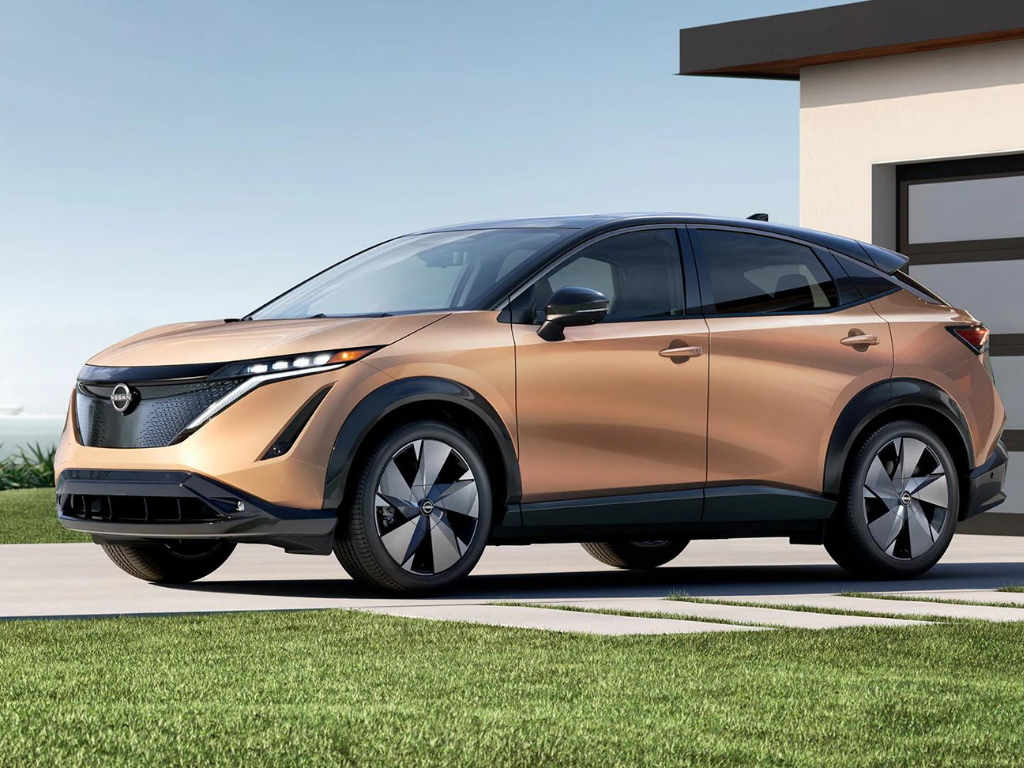
The Nissan Ariya has nine trims, three starting under $50,000. Engage’s entry-level model has a zero to 60 time of just over seven seconds. With 214 horsepower and 221 pound-feet of torque, the FWD Ariya provides a steady driving experience. It has a 216-mile range and the choice of two drive modes: eco and sport. The interior of the Ariya is what catches your eye. It has a minimalistic control panel and a futuristic feel with a floating center console and unique gear shift. With this EV and its many trims, you’re guaranteed to find one that fits your needs.
Kia EV6
$43,925
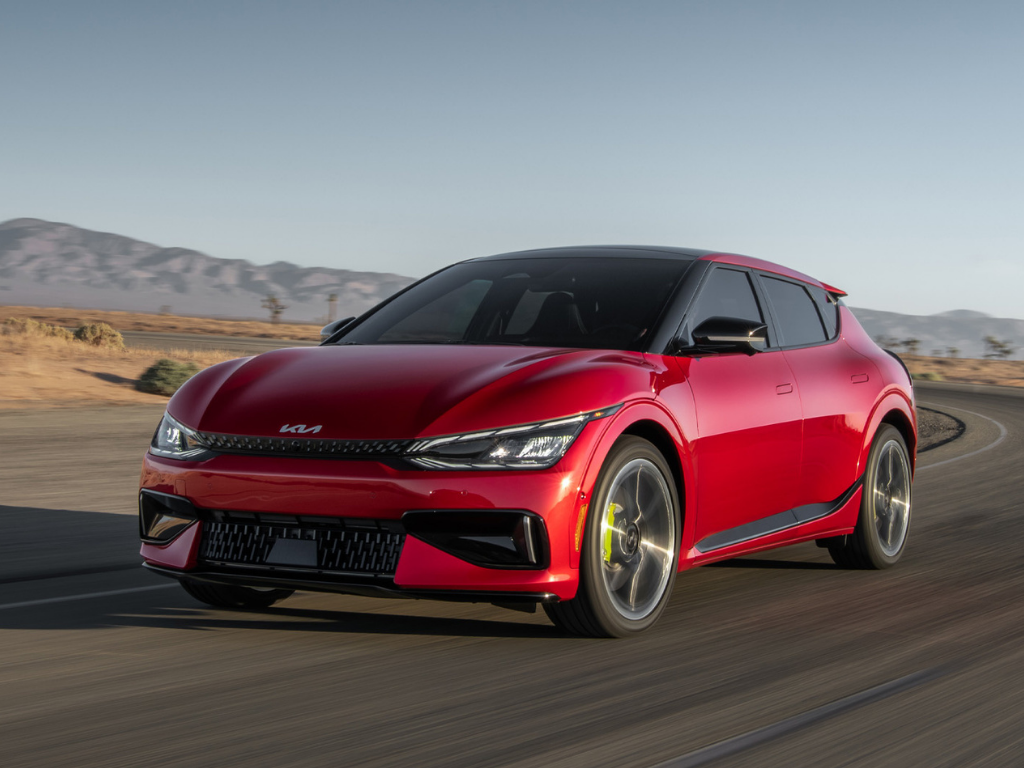
The Kia EV6 is a powerful, punchy EV with 225 horsepower and 258 pound-feet of torque. It’s zero to 60 times an average of 6.7 seconds, but its 310-mile range makes up for its slower acceleration. If you’re worried about charging in an EV, the EV6 will calm your mind. With a DC fast charger, the car will go from 10% to 80% charged in just 18 minutes. This will ensure you’ll return to your journey quickly with this short charging time. The interior of the EV6 has a futuristic feel, with its floating center console, two-spoke steering wheel, and gold accents throughout the car. This EV is well-rounded and of great value.
Toyota bZ4X
$43,350
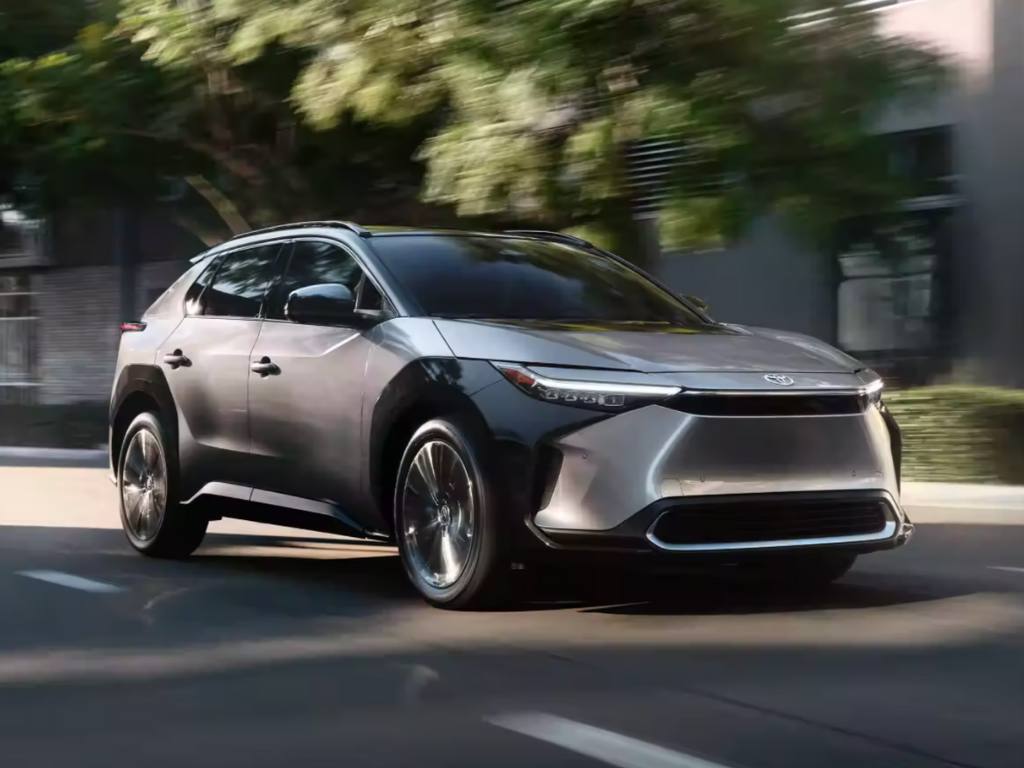
The Toyota bZ4X is one of the newer EVs to enter the market, but that doesn’t mean it’s not ready to hit the road. With 201 horsepower and 196 pound-feet of torque, the bZ4X will accelerate from zero to 60 in around 7 seconds. This EV’s estimated range is 252 miles, which gives you plenty of time to drive around before recharging. Regarding recharging, the bZ4X can charge 80% within an hour with a DC fast charger. Sound and music make a difference in your driving experience, and this car makes sure you have the best experience with the JBL nine-speaker premium audio system.
Kia Niro EV
$40,875
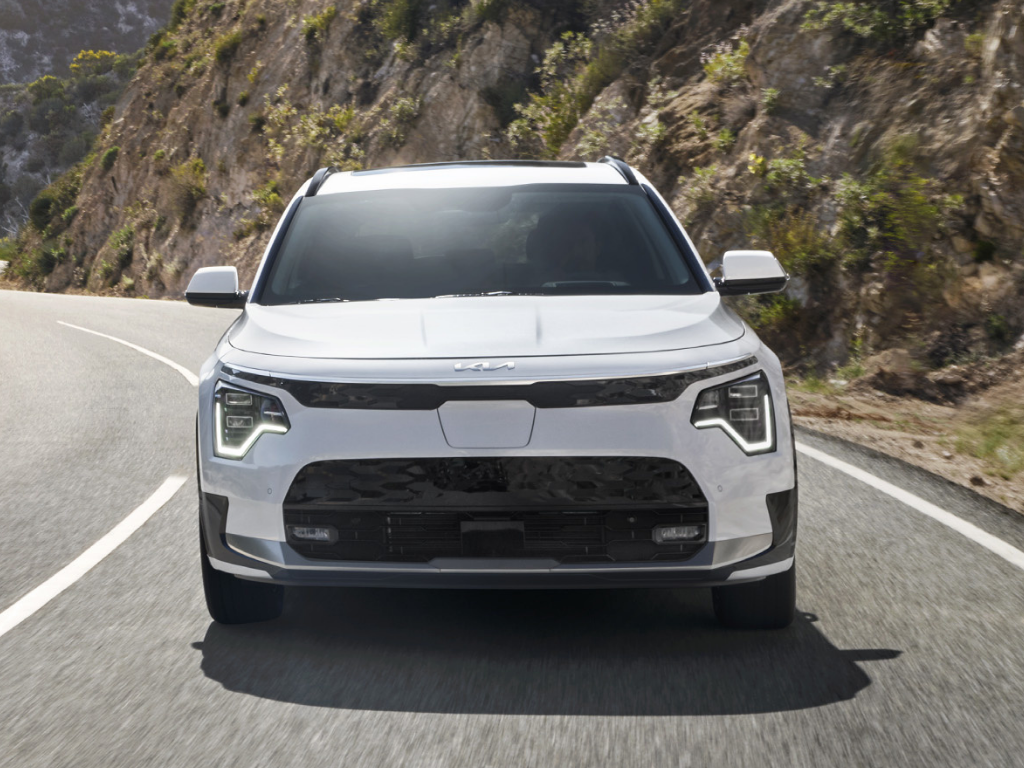
The Kia Niro EV was redesigned for 2023, and it now boasts a two-tone exterior and unique lighting elements, making it stand out on the road. The range was increased to an estimated 253 miles, and the zero to 60 time comes out to just over seven seconds. The Niro EV generates 201 horsepower and 188 pound-feet of torque, making it even more powerful than the Kia Niro hybrid models. The Wind and Wave trims have three drive modes: eco, sport, and normal. These modes guarantee that each driver can find their driving preference in this car. This EV is a great option if you live in a colder climate because of its heat pump used to preserve the driving range and its heated seats and steering wheel.
Volkswagen ID.4
$38,995
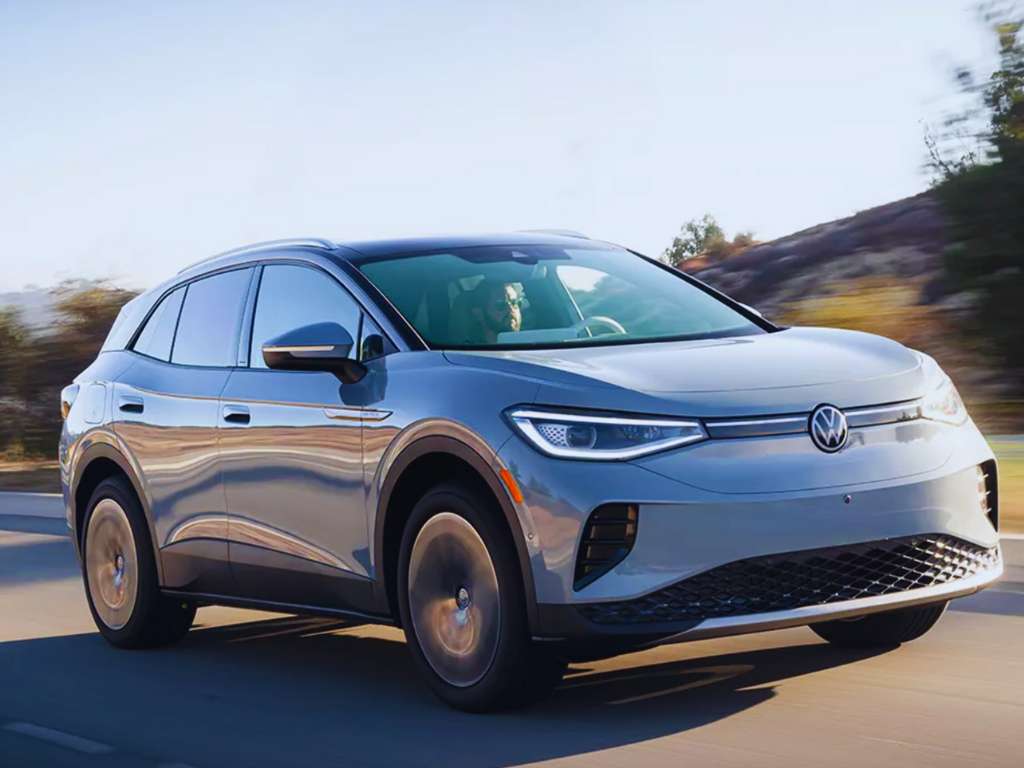
The Volkswagen ID.4 combines functionality and style with its large cargo space and exterior aerodynamic elements. After 30 minutes of charging, ID.4 will be 80% charged and ready to hit the road. The pro model will take off from zero to 60 in 5.7 seconds with 295 horsepower and 229 pound-feet of torque. Continue on your journey for an estimated 255 miles before having to recharge. The interior style is just as important to some of us, and the ID.4 is no exception. It has an expansive panoramic fixed glass roof, multi-color adjustable ambient lighting, heated front seats, and a 12-inch touchscreen display.
Nissan Leaf
$28,040
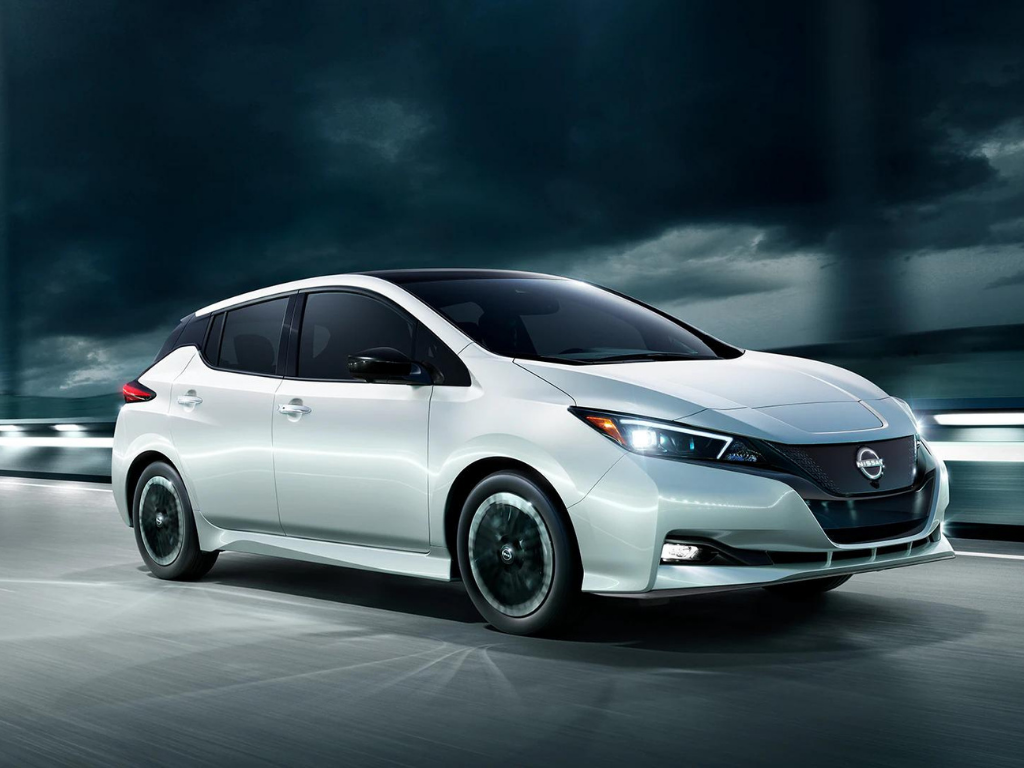
The Nissan Leaf is the most affordable EV on our list, and it’s a great choice for those doing more local travel. It has a 149-mile range, which is appropriate for those not planning on taking an EV on a road trip. The SV Plus model has a 212-mile range if you want something to take you further. With 147 horsepower and 236 pound-feet of torque, the standard model goes from zero to 60 in 7.4 seconds. The Leaf still accelerates nicely because of the instant power delivery that the battery gives. A functional feature of this car is the large cargo space. There is plenty of space with the rear seats up, but more than double the space with the seats folded down. This practical EV gives the driver good range and acceleration with exceptional interior space.
Many respectable electric vehicles have a starting price of under $50,000. From EVs best for local travel to those ready to take a road trip, Leith Cars is here to help you find an EV that will excite you to get on the road and begin your electric car journey. You can visit LeithCars.com to begin your search.
*List only includes EVs sold new by LeithCars.com.
By Taylor Beach, Leith Cars Marketing Intern
Heads-up, we’re about to talk science and a bit of engineering too, but we promise to make it fun and educational because, hey, the Electric Vehicle (EV) revolution is underway, and we know that you want to learn how EV motors work.
Let’s go!
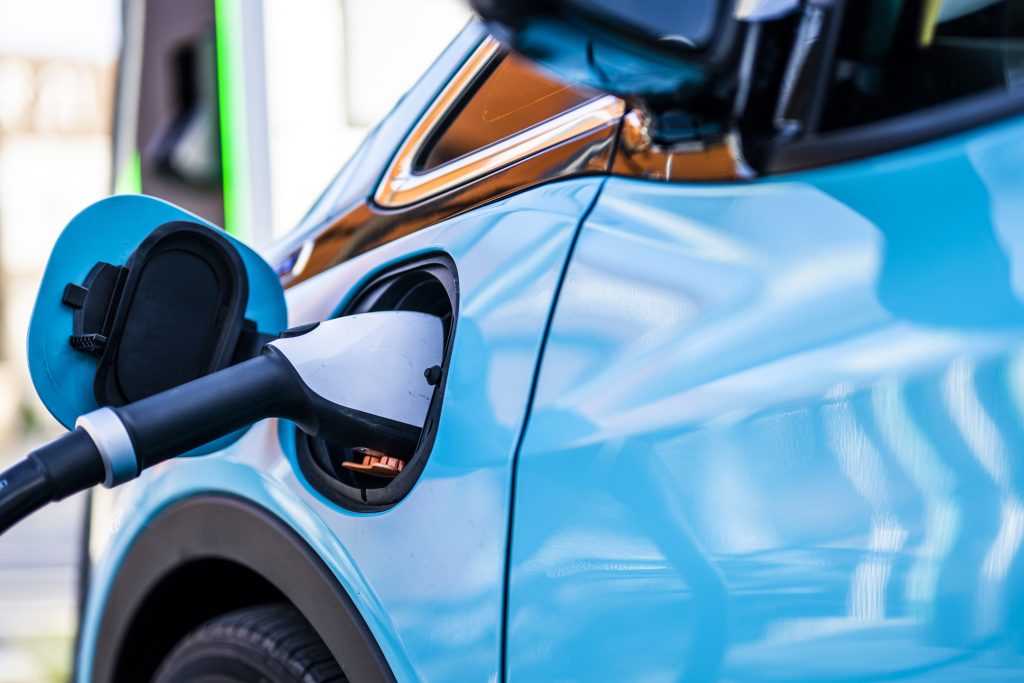
Think back to your early years in school when you probably played with magnets. We all did, right? Magnets produce magnetic fields, each consisting of a north pole and a south pole. In the case of a typical EV motor, electromagnets produce magnetic fields when electricity travels through the motor’s wire coils.
Regardless of how these magnetic fields are produced, opposite magnetic poles attract, and like poles repel, just like those magnets you played with in school.

The motor in a typical Electric Vehicle works by mounting one set of magnets or electromagnets to a shaft and another set to a housing that surrounds the shaft. A closed electrical circuit sends electrons along a wire coil, which generates electrons causing an electromagnetic field that contains a north and a south pole.
Science!
When the north and south polarity is periodically reversed on one set of electromagnets, the EV motor uses the attracting and repelling energy to rotate the shaft. Rotating the shaft converts electricity into torque, turning the wheels. The cycle of continually switching north and south poles keeps an electric car motor spinning and gives you the zoom you desire.
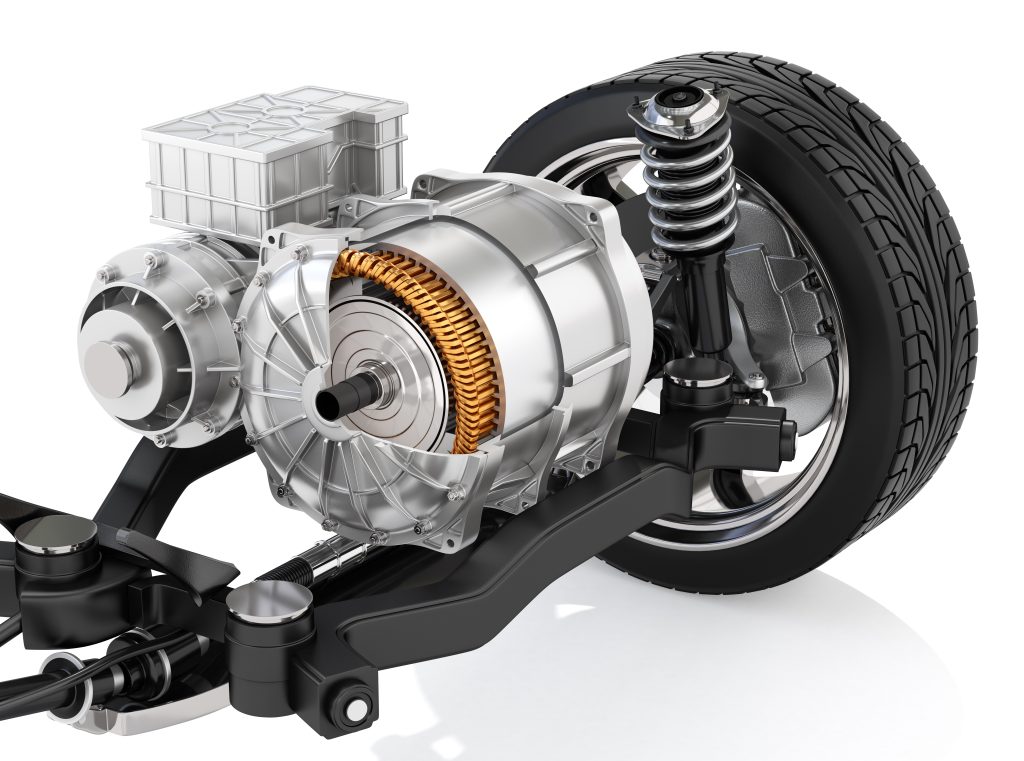
But how is the electricity we need for motivation delivered to the wire coils inside the EV’s motor and what type of current does an EV motor need to function? That’s where our friend, alternating current (AC), comes in. AC power is the same type of energy that powers your home. This power “alternates” the north/south or plus/minus polarity of the power 60 times per second (which translates into 110 volts to your home’s electrical outlet).
Direct current (DC) is what goes into and comes out of the positive (+) and negative (-) poles of every battery, but it’s AC power that electric motors require to make them spin. Otherwise, the electromagnetic force would lock the poles together.
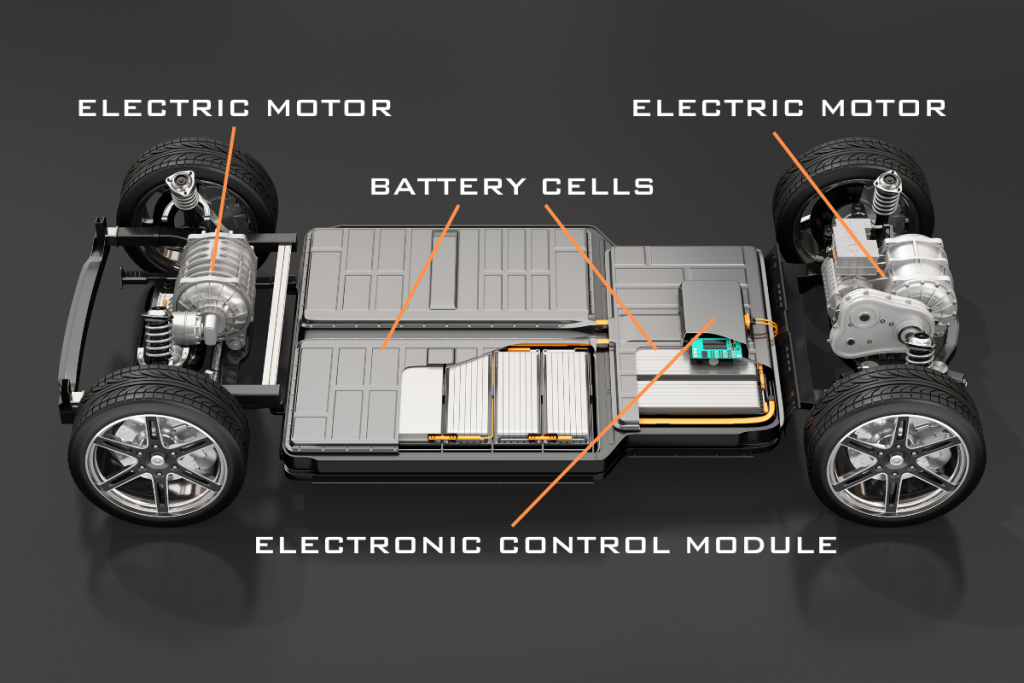
Electric Vehicles built today are designed to manage both AC and DC energy on board. The vehicle’s battery stores and releases DC current, but the motor needs AC to spin. When recharging the battery of an EV, the supplied energy comes into the onboard charger as AC current during a Level 1 and Level 2 charge. For Level 3 “fast chargers,” DC high-voltage current is supplied to charge the vehicle’s battery.
An EV’s onboard electronics system is designed to handle both types of power flow, giving you the option, when available, to charge your EV at a faster rate (DC Level 3). Plus, the onboard electronics brain of the EV also controls the amount of voltage required to operate various systems throughout the vehicle that require different amounts of voltage to function like the motor, lighting, infotainment, and chassis system.
You see, science and engineering can be fun! We hope you enjoyed our basic summary of how an EV motor works because we’ve got more interesting EV knowledge to share with you, coming soon
By Mark Arsen, LeithCars.com

School supplies are in stores and that means another school year is right around the corner.
You make sure your children are prepared for their first day by getting them the supplies they need, we want to make sure your vehicle is ready, too! Here is a simple car care checklist to ensure you’ll hit the road problem-free.

1. Schedule your car for routine maintenance.
Just like getting the kids in for their yearly checkups, getting your vehicle in for its scheduled services is just as important. A routine vehicle check of your oil, tires, battery, windshield wipers, brakes, air filters, and fluids can help avoid a problem later. Plus, spotting an issue early could help avoid more costly repairs down the road.
2. Ensure all lights on your vehicle are working.
Temperature changes can cause headlights, taillights, turn signals, hazard lights, and running lights to burn out. Take a walk around your car to ensure all lights are bright and working properly. Have a friend or family member help you check the rear lights on your car, including the brake and backup lights. If you have dirty or foggy headlights or broken or burnt-out bulbs, you can find inexpensive remedies at a local parts store or one of our 26 local Leith dealerships.
3. Check the air in the spare.
The only thing worse than getting a flat tire is finding out your spare is flat when you go to use it. The best way to ensure that you always have a good spare is to check the air pressure when you check your other tire’s pressure. *Note- spare tires have a different PSI than normal tires. You can find the information on the spare itself. If you aren’t sure, contact your local dealership for help.*

4. Clean and organize your vehicle.
After a full and fun summer, remnants are always left behind in your vehicle. Whether it’s water shoes from that trip to the lake or crumbs from those road trip snacks, it’s always a good idea to fully declutter and clean your car before the start of the school year.
Remove everything from your vehicle and vacuum it thoroughly. (Don’t forget to look under the seats for any hidden “treasures” that may have been missed.) Clean all windows and the windshield inside and out to ensure good visibility and wipe down all interior surfaces with proper cleaning supplies.
5. Organize and stock your vehicle in case of an emergency
There are a few essentials you should always have in your car: a basic medical emergency kit, jumper cables, flashlight, tire pressure gauge, basic tools including a small screwdriver, bits, sockets, and of course, duct tape are all a good idea. Hopefully, you will never need it, but you will be glad you have it if you do.
6. Ensure you have all the proper paperwork before you hit the road.
Proof of insurance, vehicle registration, and your driver’s license are essential to have in your car. If your insurance policy includes “roadside assistance,” be sure to have that contact information as well.
Being proactive when it comes to your vehicle can not only save you time and money in the long run but will move you to the head of the class in car maintenence.
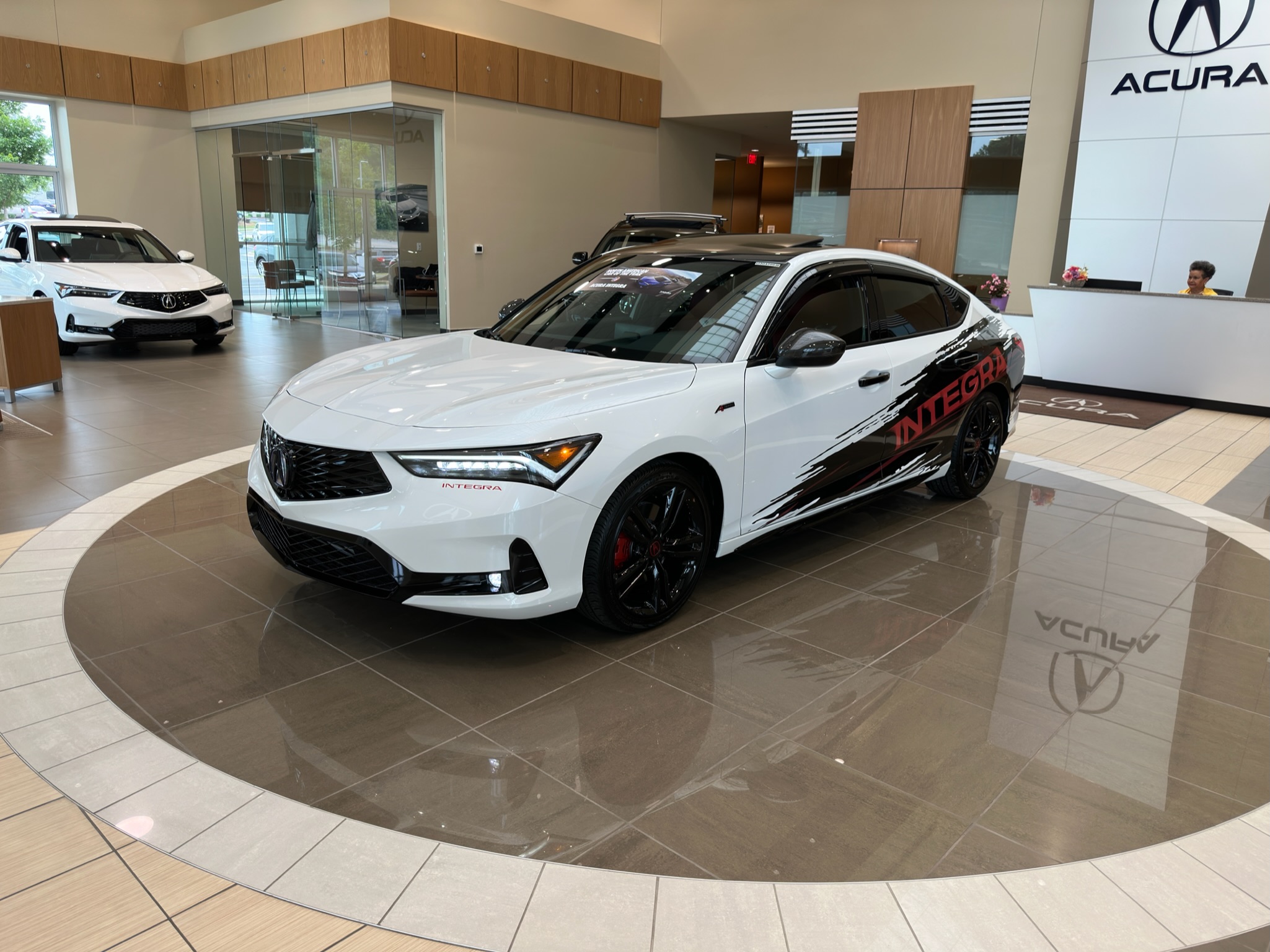
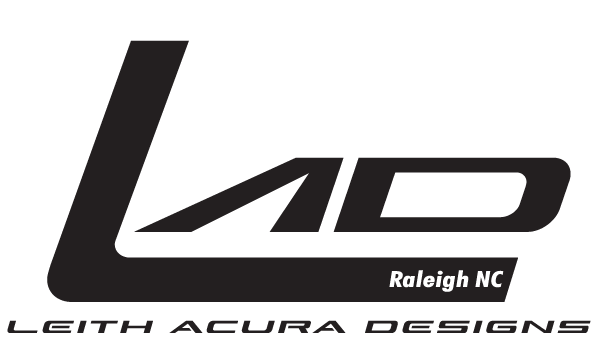
It starts with an idea, “wouldn’t it be cool if…” and Leith Acura Designs can take it from there. Whether it’s diving into the Acura Dream Shop for parts or working with our partners, if you can imagine it, we can make it happen.
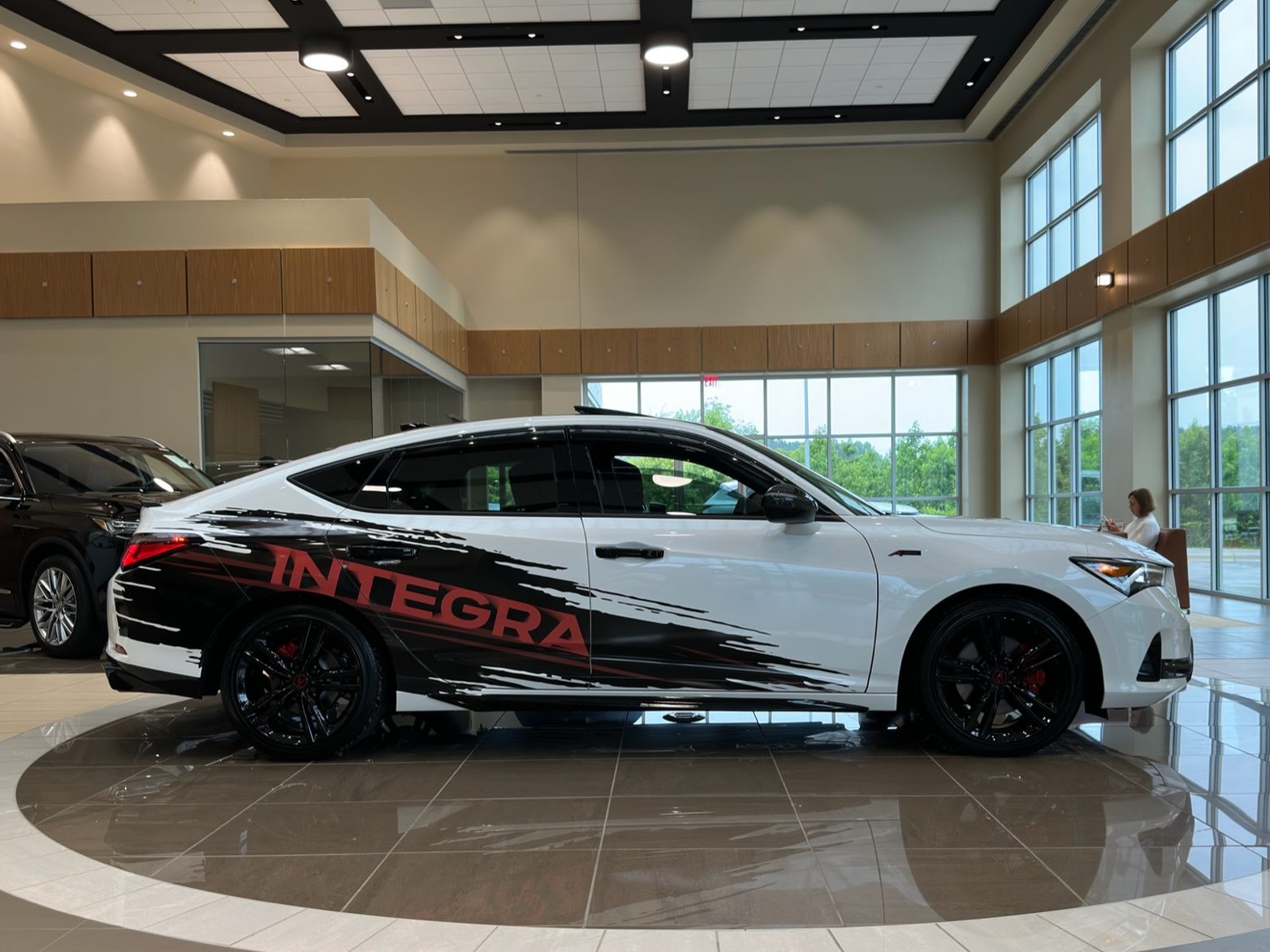
Stop by Leith Acura Raleigh today and see the first Leith Acura Designs project. We started with a 2023 Acura Integra A-Spec and customized it with carbon fiber door mirror covers, logo pattern projector, side underbody spoilers, illuminated door sill trim, door visors, illuminated front A-mark emblem, gloss black emblems, carbon fiber tailgate spoiler, rear diffuser, and rear “A” gloss black emblem all from our Acura Dream Shop. Then we took it a step further and partnered with Rimguard for a set of black wheels and red calipers, All Pro Window Films for window tint, a carbon fiber roof, and the Integra car wrap and Mike Hook from Kolortek for the door handles, red “A” Emblem on the wheels and shark fin antenna.
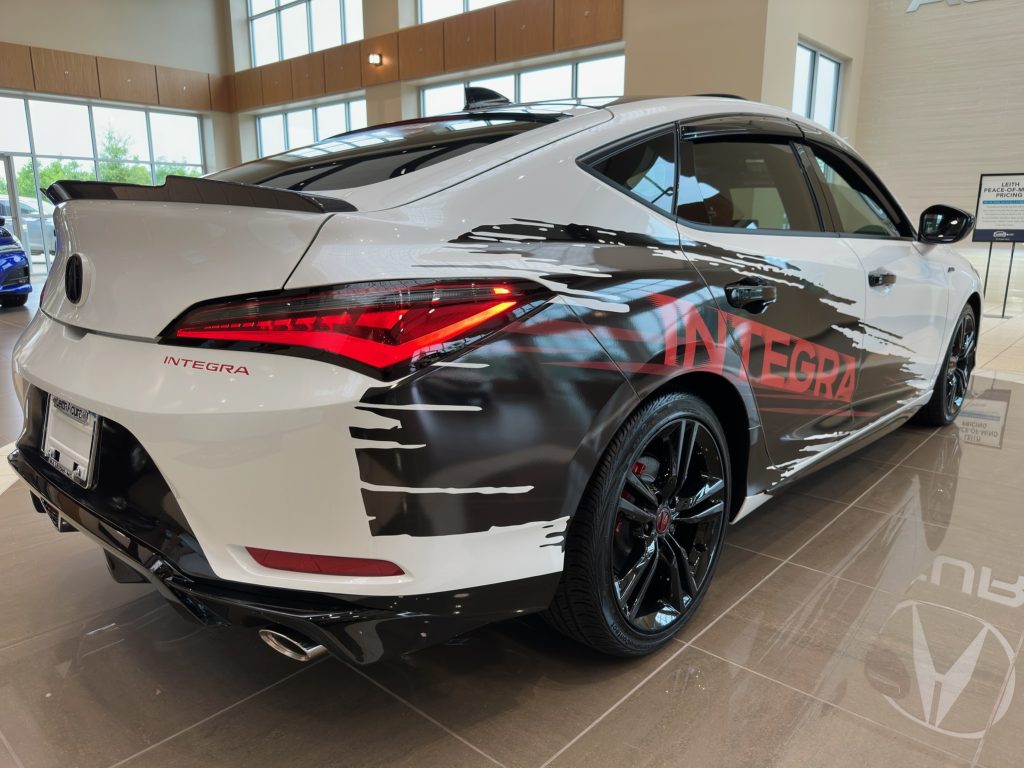
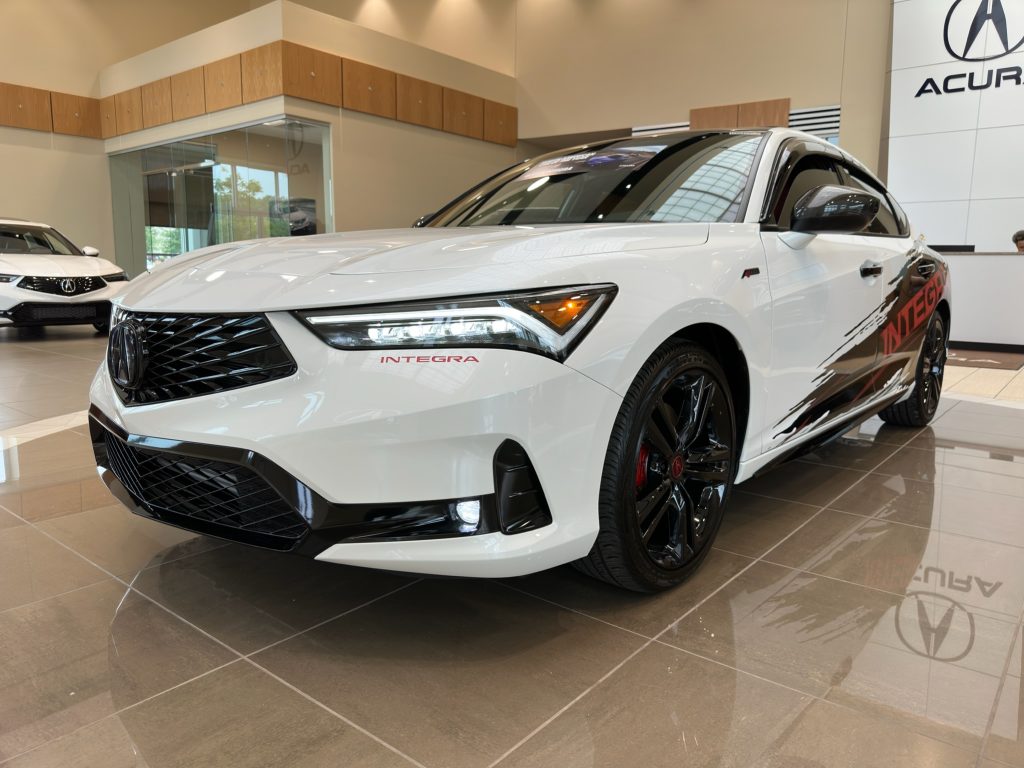
Leith Acura Designs is already working on its next project, a 2024 Acura TLX.
Interested in creating your own personalized Acura? Come by the dealership and design your dream car today!


